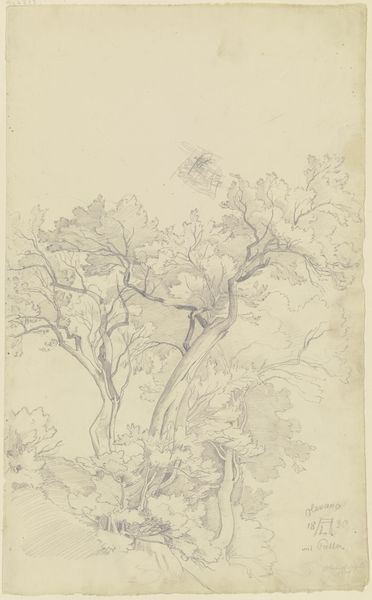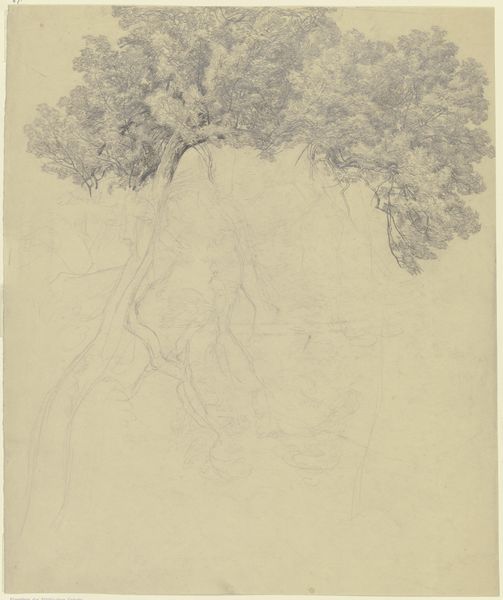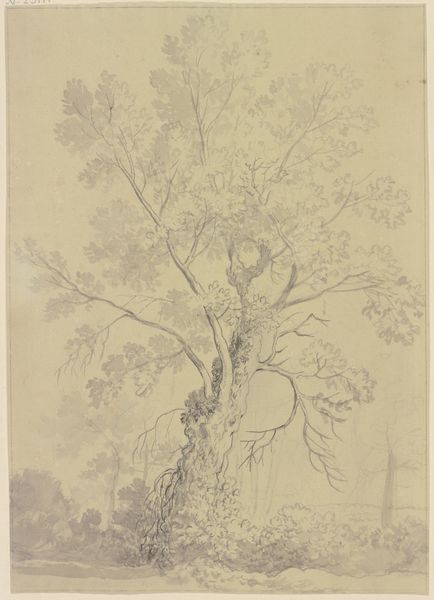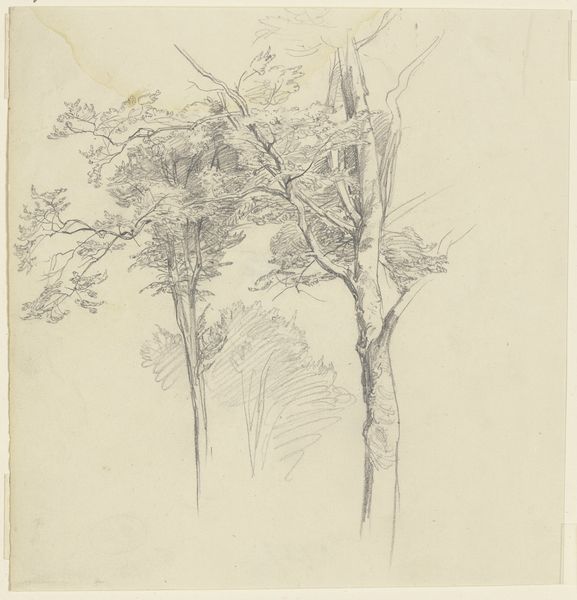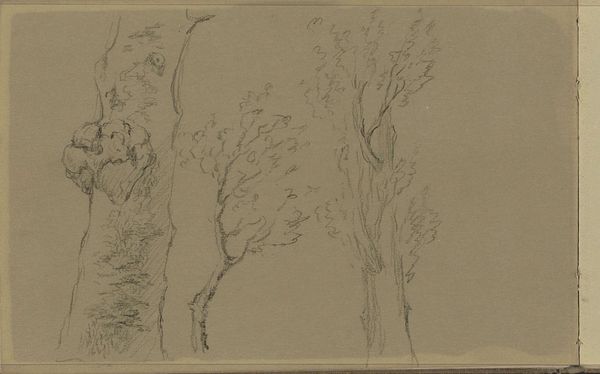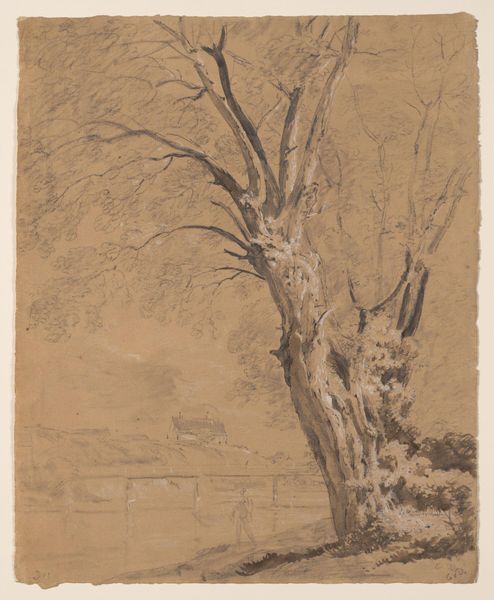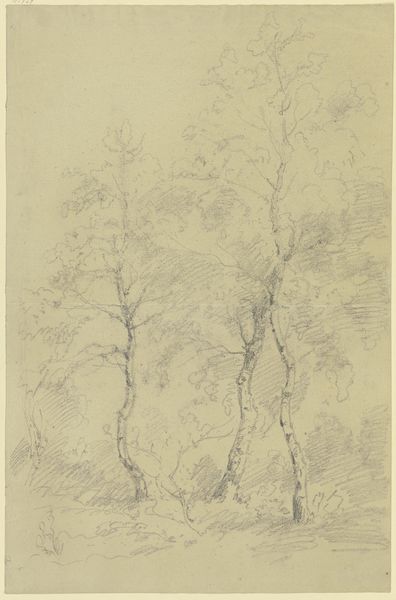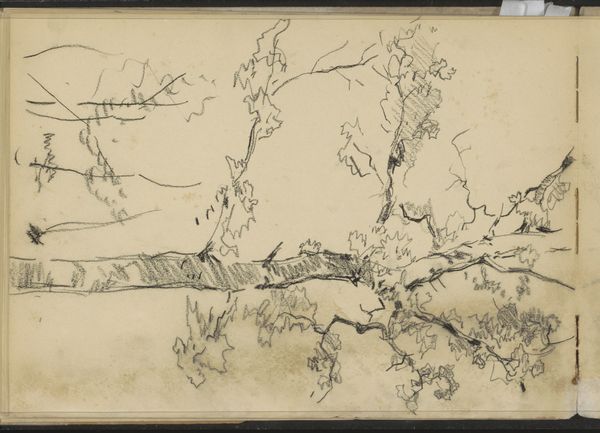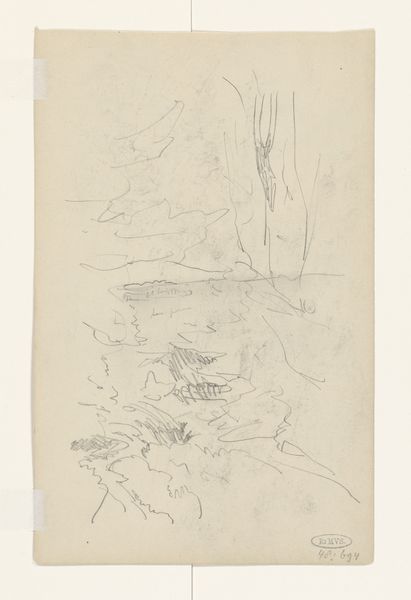
Copyright: Public Domain
Curator: This evocative drawing, rendered in chalk, ink, and pencil, is entitled "Baum im Taunus," or "Tree in the Taunus," created in 1861 by Carl Maria Nicolaus Hummel. It currently resides here at the Städel Museum. Editor: It's interesting how stark and melancholic it feels despite the soft media. The tight tonal range contributes to that, and the off-center composition further isolates the tree. Curator: Hummel masterfully uses realism and Romanticism here. The single tree against a blurred background may reflect the 19th-century fascination with nature's power and man’s insignificance in comparison. The tree itself, stoic and enduring, embodies the themes of perseverance. Editor: Yes, and that meticulous layering creates incredible depth. Look at the way the branches weave—almost a web of semiotic density that all funnels down towards that powerfully grounded trunk. This is a deeply structured piece. Curator: The Romantic period frequently used nature as a metaphor for the human spirit, a symbol deeply embedded in collective memory. The lone tree stands for the strength and isolation inherent in the human experience, especially as industrialization threatened the natural world. It also embodies resilience through the seasonal changes. Editor: Thinking about its formal qualities, it's compelling how the subtle variations of line thickness and pressure sculpt form and texture without overt shading. Note also the bare landscape against the filigree of its branches which lends it a preternatural vitality. Curator: Certainly. The tree could also represent national identity. In the German Romantic era, the forest was more than a place. It was a reservoir of legend, freedom, and self-discovery, something lost as cultures become modernized. Hummel, therefore, isn't simply drawing a tree. He invokes the idea of home, rootedness, and continuity. Editor: Fascinating. Considering the careful consideration of light, one gets a sense of quiet, meditative contemplation through shape and texture rather than colour. This quietude permeates the entire composition and the simplicity allows us a point of visual repose. Curator: This journey with "Baum im Taunus" illustrates the profound ways artists in the Romantic era harnessed their talents to question, observe, and instill our collective history within nature. Editor: Indeed, analyzing form can offer much in uncovering deep rooted truths about history and humanity, if one pays attention to visual cues such as space and shape.
Comments
No comments
Be the first to comment and join the conversation on the ultimate creative platform.
